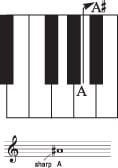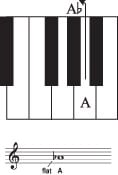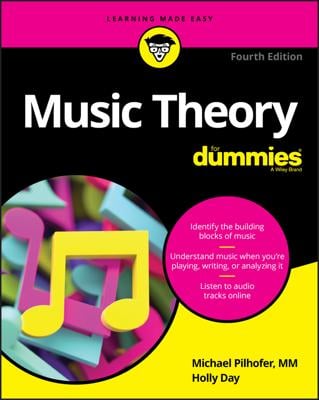Accidentals are notations used in music theory to raise or lower a natural note pitch on the staff by a half step. They apply to the note throughout a measure until you see another accidental. You can use these different types of accidentals:
Sharps
Flats
Double sharps
Double flats
Naturals
For more specifics on these accidentals and what to do with them, keep reading.
Raising pitch with sharps
A sharp looks like a pound sign.
A sharp is placed before a note on the staff to indicate that the note is a half step higher.

Here is a sharped E (the enharmonic of F natural). E sharp is one half step up in pitch from E.
Using flats to lower pitch
You can see what a flat symbol looks similar to a lowercase b.
A flat does just the opposite of a sharp: It lowers the note by a half step.

Here is a flatted E. E flat is one half step down in pitch from E.
Doubling pitch with double sharps and flats
Every once in a while, you’ll run into a double sharp or a double flat.
The notation on the left is a double sharp, and the one on the right is a double flat. The double sharp raises the natural note two half steps — or one whole step — whereas the double flat lowers the note two half steps, or one whole step.
Cancelling sharps and flats with naturals
You may have heard of sharps and flats, but what is the natural?
When you see a natural sign next to a note, it means that any sharp or flat that’s already in effect (either given in the key signature or in the same measure) is cancelled for the rest of the measure. In other words, you’re supposed to play the “natural” version of the note instead of whatever sharp or flat was in effect, even if it was a double sharp or double flat.

